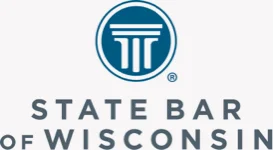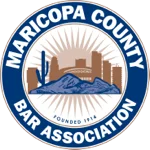Trends can make you look hip and cool—or odd and outdated. Law firms face an extra layer of scrutiny, as clients seek a competent and trustworthy firm to help them with their legal needs.
We think a few trends from 2023 have serious staying power (hello, minimalism and accessibility!). But there are also some popular styles that we think most law firms should avoid chasing (sorry, Y2K fanatics).
Ready? Let’s check out the top web design trends of 2023, consider the dangers of following trends, and see if you agree with our final verdict.
Web design trends have a huge impact on user experience
Embracing trends takes guts.
Remember junior high school? Following a trend—like studded belts or Nirvana shirts—can either make you popular or seriously unpopular. It all depends on your execution and your goals.
If you’re doing something just because the cool kids (aka other firms or businesses) are doing it, you could negatively impact the user experience on your website. You might come across like you’re following the crowd with no awareness of what your current audience actually needs and wants. You may end up with a site that looks killer but it takes forever to load and is really difficult to navigate (aka, no one will ever be able to find your Contact form).
Make the wrong choice, and potential clients, current clients, and your bottom line will all suffer the consequences of trend chasing.
Think of it this way. Your website is not supposed to win design awards, it’s supposed to get you clients.
While you can certainly do both (and we do it all the time!), it’s worth remembering that a good user experience is the most important criterion for your website design. Never sacrifice UX for trends.
Trend: Minimalism
There’s something so timelessly appealing about minimalist design. Clean, simple websites are relaxing to experience, and that goes a long way in the legal industry when your potential clients may be busy and stressed!
Not only do minimalist sites look really sleek, but they can improve user experience by removing unnecessary information. Minimalist sites tend to be easy to read, often employing bold typography and gradient backgrounds with gentle color shifts. You can still use large photos and graphics on these sites, too.
Be aware: With so few elements on the page, any mistake will jump right out. Only attempt this trend if you plan to deliver perfection.
It’s also worth considering whether minimalism is the right look for your audience and your practice area. Think carefully about whether it’s a good fit for your firm and your target market.
Verdict: Legitimate trend, but ensure attention to detail.
Trend: Movement and kinetic text
Motion on websites is a bold, attractive way to direct the eye.
Parallax or slight movement of shadows or other elements can lend excitement which keeps people engaged. Transitions can enrich the experience without distracting.
“Micro-interactions” (like hovering to reveal something without clicking) can be a nice compromise, introducing some delight without too much drama. Be careful that you don’t confuse your target market, especially if they’re not as tech savvy.
Animated text is another way to subtly grab attention without being too quirky. Do ensure it’s legible, though. Speaking of which, bold text is another design trend we see continuing into next year. You can say a lot with the font choice itself. Go bold or go home!
Of course, don’t go overboard. You still need a quick page load speed to satisfy users and satisfy Google, but the Internet is faster than ever.
We like this one a lot. Movement and kinetic text show personality without scaring anyone. Introduce some dynamic energy and watch your time on page skyrocket!
Verdict: Free to roam, just don’t go beyond your audience’s capabilities. Worth embracing for some firms, but may become a fad in a few years.
Trend: Function before form
Ah, the age-old debate between form and function. The truth is far less binary than you may think.
While aesthetics are important, it’s far more essential that your website actually helps someone take action. The primary function of your website is to provide legal services, which is accomplished by booking a consultation.
Trends tend to emphasize appearance over experience. If you can’t actually satisfy users with a functional experience, a gorgeous cutting-edge design won’t impress them and fill the gap.
Bells and whistles are fun, but they won’t pay the bills.
Remember to meet the brief first, and add fun features later.
In other words, launch now with the essentials and chase trends once you’re up and running.
Verdict: In favor of function, while acknowledging the positive impact of form.
Trend: Accessibility
We’ve gotta say it—we were on the accessibility trend before it was cool.
Accessible websites create a better user experience for all of your visitors, not just for those using assistive technologies. While accessibility is not an SEO ranking factor, there are many accessibility best practices that can also help you stay consistent with Google’s best practices. For example, adding descriptive alt text to all of your site’s images.
The WCAG guidelines are a great place to start (and all OneFirst websites are accessible, too).
Verdict: Beneficial for community and business — strongly in favor! This trend is here to stay.
Trend: Nostalgic Y2K and 3D elements
Styles come and go in cycles. It’s true in the fashion world as well as the graphic design world. If Uggs and bell bottoms made a comeback, why not computer design trends from the 80s and 90s?
3D elements are modeled figures or buttons that look three-dimensional. It’s a bit of throwback but interpreted in a modern way. Think retro, not outdated. Y2K UI is another major trend right now—imagine the Windows ‘98 load screen.
We’re of two minds here.
These trends might work well on social media but probably not as key design elements on your website. It really depends on your branding and your target market. Will your audience recognize the design elements in a Y2K sensibility and appreciate them? Or will your graphics appear outdated to your target market rather than on trend?
If you’re aiming for a throwback vibe, be absolutely certain that the user experience is contemporary. It should be seamless, accessible and functional according to today’s standards.
Verdict: These trends are fun but we’re unsure about staying power. And since we recommend lawyers redesign their site every 2-5 years, this trend might be a step in the wrong direction as you’d be out of vogue by next year.
Trend: One-page sites
A single-page website forces you to figure out what’s truly essential about your business. It can be a useful design challenge, and it usually spits out a pretty excellent mobile experience.
In our view, this is probably not the right choice for lawyers and law firms when it comes to their primary websites. However, firms can use this concept to create a landing page for social media “link in bio” URLs.
Verdict: Innocent of all charges—this trend is here to stay, but not the power punch you’re looking for.
Not new trends but still worth mentioning
While we have you, we want to highlight a few key considerations for web design in 2024.
Responsive sites: This trend is definitely here to stay. Mobile devices are the way of the future (at least, until we develop embedded devices that don’t even use screens). Scalable websites are the way of the future. You need to own the space, no matter the method of access.
Designing for voice search: SEO strategies need to account for voice searching, which will only increase in 2024 and beyond. Smart speakers, voice assistants in vehicles, wearables and mobile devices are the way of the future. Spoken queries are a whole different beast from written queries, so it’s worth working with experts on this project.
It’s worth mentioning augmented reality and text-only sites. These are popular in other niches, but we don’t see them as a good fit for most law firms. Some trends are just not meant for you—sorry!
Final words
We’re seeing two divergent trends: maximalism vs. minimalism. We’re also noticing websites using text and font as powerful tools in attracting attention and standing out. Similarly, movement and motion are helping firms say a lot while standing apart from competitors.
Nostalgic design is subject to rapidfire cultural trends for what’s cool and uncool—and it can change in the blink of an eye. You might turn off a huge component of your target audience depending on their design sensibilities, so we deem it not worth it as a short-term-only investment.
When chasing trends, make sure you base every decision on your target market’s needs. Put function over form. Test any new trend on a small scale to ensure it doesn’t inhibit the user experience or alienate your audience. Look for trends beyond your nose, like competitor sites and design magazines.
Don’t follow the crowd—stay between the crowd and the bleeding-edge innovators.
Original content in combination with a proven website framework can be a smarter (and cheaper) way to stand out. Redesigning a website just to chase a trend can be seriously costly! You might force a logo and marketing material redesign, too. Can you afford this? What happens when other law firms follow the same trend, will you still stand out then? What happens when trends change next year? What other business priorities will fall to the wayside while you’re busy chasing design trends?
Trends can point toward a direction, but they also come and go like waves. Tread carefully and don’t build your brand around a cresting wave. Build loyalty and trust with your audience by delivering a functional, satisfying experience.
Book a free 15 minute call if you’re considering a redesign, or if you want an expert perspective on design trends and your law firm’s website.












